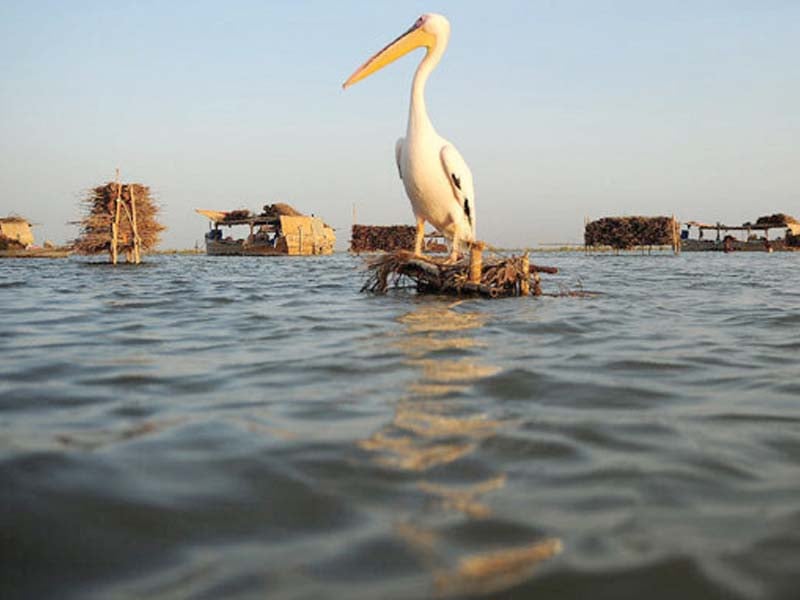
When the last rain system hit the province on Thursday, it was anticipated to be unkind to the people of Sindh. Some prayed to their patron saints for protection. Others packed their belongings in plastic wrap at the first sign of storm clouds, though no amount of plastic wrap could’ve prepared the region for the seething deluge to come.
But what has brought devastation to so many has also shone a glimmer of hope on a fading community living by the banks of a murky lake.
“Manchar Lake has been poisoned by agricultural runoffs for years. It was dying. All life within it was dying. But the floodwater coming from Nai Gaj river and the Kirthar mountains has once again given life to the lake. It’s filled with fresh water now,” said Mustafa Mirani, a local activist who lives in a small town near the lake.
Spanning over 233 square kilometres of Sindh’s Jamshoro district, Manchar Lake is one of the biggest freshwater lakes in all of South Asia. It is also home to the batela community of fishermen, who have dwelled in rickety boats on the banks of Manchar for centuries.
Flanked by the Indus River on the east, Lakhi Hill on the South and the Kirthar mountain range hardly 18 kilometres westwards from Sehwan, the lake had been traditionally fed by two main canals-Danistar and Aral- linked to the Indus.
However, around three decades ago, it started receiving chemical outpour from certain agricultural districts of Sindh and Balochistan, meant to be drained in the Arabian Sea via the Right Bank Outfall Drain (RBOD).
Following several dry spells, the flow from the Indus eventually diminished, leaving the toxic run-off to gradually feed into and contaminate one the country’s biggest freshwater bodies.
“The lake is home to over 25,000 people. We were born here, and we have spent our entire lives by its banks. Manchar has supplemented our lives for centuries. So when the lake itself started dying from the poisonous chemicals, thousands from our community who relied on it for a living had no option but to migrate elsewhere,” lamented Raza, a local fisherman.
According to experts, the shallow freshwater lake’s total capacity ranges from 22 to 25 feet. The ongoing torrential rain floods have helped it reach 13 feet so far, while more rain spells are expected in the coming week.
“Unfortunately, whenever the lake is full with poisonous RBOD water, the authorities open its flow into the Indus River. But no one takes efforts to release fresh water from the Indus into the lake,” said Mirani, demanding the release of at least 500 cusecs of freshwater from the Indus to Manchar Lake daily for its revival. “It is doable. I don’t see any issues with releasing this amount of water regularly,” he asserted.
Published in The Express Tribune, September 1st, 2020.








1727512348-0/Copy-of-Untitled-(4)1727512348-0-270x192.webp)




1727268465-0/Untitled-design-(42)1727268465-0-270x192.webp)




COMMENTS
Comments are moderated and generally will be posted if they are on-topic and not abusive.
For more information, please see our Comments FAQ